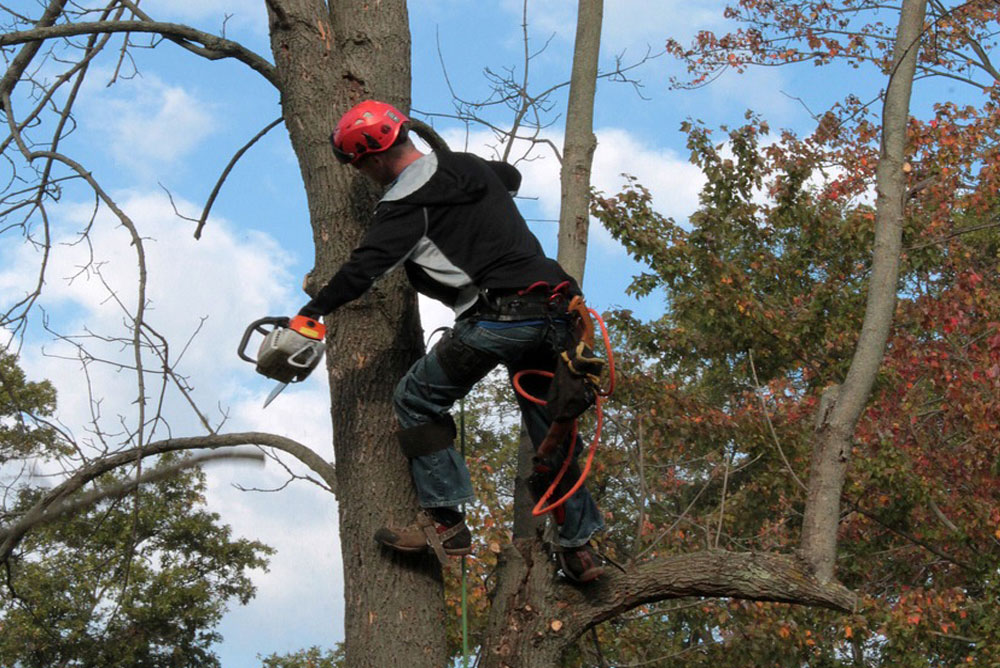Disclaimer: The information on our website is provided for general information purposes only. We make no representations or warranties of any kind, express or implied, about the completeness, accuracy, reliability, suitability or availability with respect to the website or the information contained on our website for any purpose. Any reliance on such information is therefore strictly at your own risk and we are not liable for any damages or losses arising out of or resulting from your reliance on any information contained on our website.
A tree trimmer works in a variety of ways, such as trimming trees or shrubs to improve the health, value, and appearance of the tree. They also cut off dead branches that may overhang sidewalks, utilities, or roads and possibly pose a danger to cars or pedestrians. These workers use clippers, handsaws, hand pruners, and power pruners to trim and clip the trees or shrubs.
How to Become a Tree Trimmer
If you want a job as a tree trimmer, some employers will require a high school diploma or the equivalent though others may not. According to O*NET OnLine, over half of the tree trimmers surveyed reported having earned their high school diploma or equivalent. Employers may require a valid driver’s license however as you usually drive a work vehicle to and from job sites. Other employers may want to see some knowledge or related experience as well. There are recognized apprenticeship programs associated with this career field that can give you the knowledge and skill necessary to gain employment.
As a newly hired tree trimmer, you would be given anywhere from a few months to one year of on-the-job training with an experienced worker. Once you are trained, you may work on your own. An employer looks for applicants that have integrity, pay attention to detail, cooperate with others, and are dependable. Tree trimmers must also be independent workers when not supervised, be able to solve complex problems on the job, and be able to physically perform the tasks required. Safety is a high priority as well for tree trimmers.
Job Description of a Tree Trimmer
Tree trimmers use a variety of methods to get the job done and this can include using power tools or hand-tools. These professionals may work from the ground using trimming equipment that can reach high places. Other times, they must climb to trim a tree or shrub. They work mainly off of the ground using truck-mounted lifts or in the canopy of the tree and use climbing and rigging techniques to accomplish the job in a safe and efficient manner.
Safety is a high priority for tree trimmers. These workers must inspect their equipment to ensure it is in good working order to prevent accidents. They also often work as a team and must be aware of their surroundings and where their team members are located at all times. This means they must always be alert. When they remove limbs, they do so in a safe manner to ensure falling limbs do not come in contact with property or people. This requires good communication as they must be able to communicate clearly and loudly at a moment’s notice. These workers are often outside most of the workday and tend to work in a variety of weather conditions.
Free Teacher and Student Resources
The International Society of Arboriculture (ISA) offers a free series of arboriculture podcasts (link opens in a new tab). Each podcast series focuses on a topic such as arborist news, best practices, the science of arboriculture and more. Like to learn more about caring for trees? Visit ISA’s Tree Care webpage (link opens in a new tab).
Article Citations
Bureau of Labor Statistics, U.S. Department of Labor, Occupational Outlook Handbook, Tree Trimmers and Pruners.
National Center for O*NET Development. 37-3013.00. O*NET OnLine. This page includes information from O*NET OnLine by the U.S. Department of Labor, Employment and Training Administration (USDOL/ETA). Used under the CC BY 4.0 license. O*NET® is a trademark of USDOL/ETA. RethinkOldSchool, Inc. has modified all or some of this information. USDOL/ETA has not approved, endorsed, or tested these modifications.
The career video is in the public domain from the U. S. Department of Labor, Employment and Training Administration.

